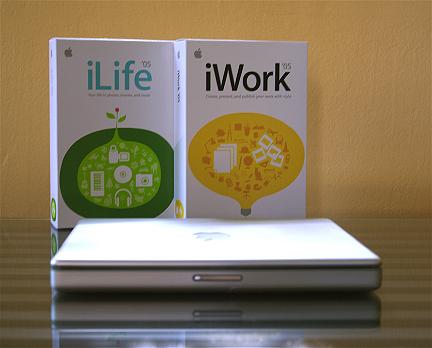
|
iWork: Apple Productivity Software |

In my day to day operations, I manage to get by without using the overkill of Microsoft office. Many of the users I know insist on having this installed, then write letters home, or memos at the office.
Apple got by for years with the updated Claris suite that became Appleworks. Despite the criticism when I last wrote about this, it does not agree with me, particularly for spreasheets and the universality of the xls file format. Then I switch to NeoOffice/J, Open Office or ThinkFree Office. Only NeoOffice is on my PowerBook.
Those Open Source Office clones also have drawing modules, and presentation software, although I bought Apple's Keynote when it first arrived (www.extensions.in.th/post/keynote/keynote.html) almost two years ago.
For writing, I work with either a text editor, such as BBEdit Lite, or if I want a document (.doc) I use Text Edit: it handles almost anything the students can throw at me. I can also drag and drop images into the work-space, which gives an extra degree of flexibility for such an apparently light application. As OSX can "print" a file to pdf with no additional software, this is valuable for producing online information. Some examples are on my Teaching pages at
The "Inspector" has been modified to deal with the new features, although the building of the presentation is the same as before: it is in the editing processes that the changes are seen.
![]() Apple has recently released two applications under the group name of iWorks. Included are Keynote 2 and the totally new Pages. Keynote 2 includes several new themes and new transitions -- the way a slide moves to the next, or text moves into a slide. As in Pages below (and other applications), it is possible to include files from iTunes, iMovie and iPhoto by way of a media panel.
Apple has recently released two applications under the group name of iWorks. Included are Keynote 2 and the totally new Pages. Keynote 2 includes several new themes and new transitions -- the way a slide moves to the next, or text moves into a slide. As in Pages below (and other applications), it is possible to include files from iTunes, iMovie and iPhoto by way of a media panel.
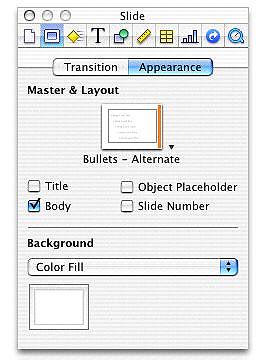
|

|
Keynote can import files created in PowerPoint (ppt) although some fine-tuning is necessary, particularly with slide size. The original Keynote would export in PowerPoint, Quicktime or pdf (see Teaching page). Keynote 2 adds images (each slide is a separate file) and Macromedia Flash -- a movie in swf format. The latter is poor: slide transitions are slow, while bullet transitions did not work. QuickTime exports are as good as in version 1. The new ability to Export images (jpg, png or tiff) is of great value: each slide is saved as an image which can be used in a variety of ways.

|

|
![]() Pages has been described as a "halfway application": it is not a heavyweight like Word, but it can manipulate text and images into good looking newsletters, brochures, reports and other types of formal documents. And it does it easily.
Pages has been described as a "halfway application": it is not a heavyweight like Word, but it can manipulate text and images into good looking newsletters, brochures, reports and other types of formal documents. And it does it easily.
A user is offered a selection of templates. Each has "holding" text -- in Latin no less -- and images. To insert your own, click and drag. In the case of text, one can also just start typing; or use copy and paste. With an "Inspector" like in Keynote, all aspects of the text, the images and the format are highly tunable.

I found it really valuable to be able to drag an image from the Library in iPhoto and have it displayed exactly where I wanted it on the page: the image can then be set either to move with the text (as it is edited) or to remain in position.
Dragging an image from iPhoto is also possible in Keynote, but this cannot be done with TextEdit unless the image is small enough to fit on the page. As some images in my iPhoto Library are 2MB or more, time is spent resizing for use in TextEdit. With iWork, the images can be resized on the fly. Rather than having a graphics application open (or viewing thumbnails in Finder), iPhoto open on the desktop can be used to provide a more efficient image-selection process in conjunction with Pages.
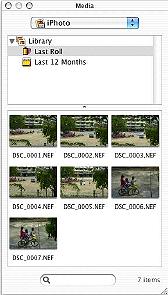
|
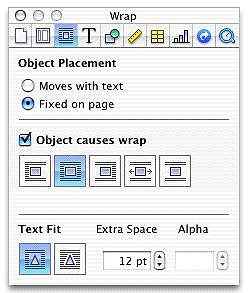
|
Pages does not create a file but a package with a ".pages" extension. Included in the package is a compressed file in XML (extensible markup language). Pages export formats are pdf, Word, html, rtf and plain text. With the Word document export, I found images and text to be misplaced; plain text and rtf only exported the text in my experiments; while html, was hit and miss. This was a disappointment for me as I had imagined creating complex pages exported for web use. HTML does not handle columns at all well without tables, and images probably need re-siting. As with Keynote, the pdf exports always produced results that were totally acceptable.
Note: I have put two examples of PDF files created in pages online. They are named (A) early and (B) starter. They are intended for new users of Macs and OSX.
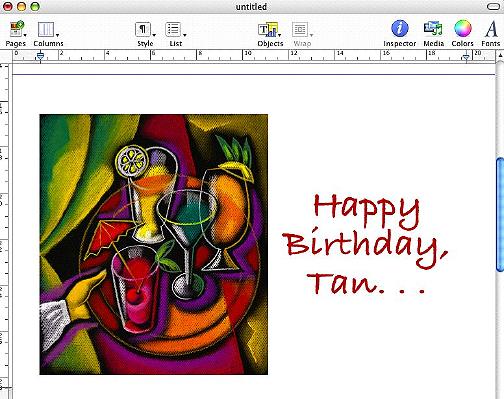
Pages strikes me not as an unfinished product but one that is slightly over-ambitious. Apple must make all of the features fully operational. As good as the parts are, iWork needs to be bundled with other modules, particularly a spreadsheet to make it full value as a home-grown productivity suite.

For further information, e-mail to Graham K. Rogers.
Back to
eXtensions
To
eXtensions: Book Reviews
To
eXtensions: Year One
To
eXtensions: Year Two
Back to homepage